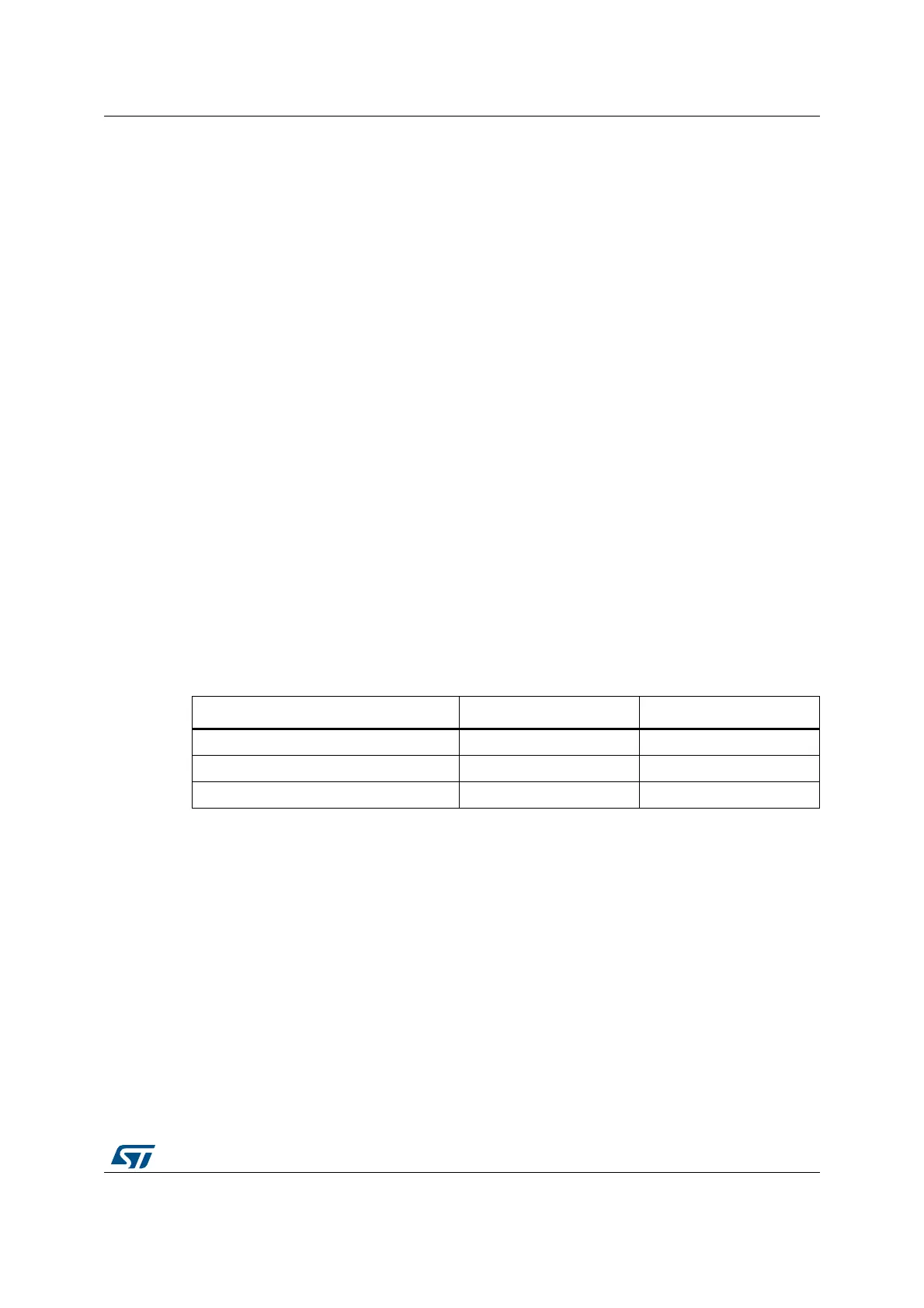RM0401 Rev 3 263/771
RM0401 True random number generator (RNG)
268
Noise source error detection
When a noise source (or seed) error occurs, the RNG stops generating random numbers
and sets to “1” both SEIS and SECS bits to indicate that a seed error occurred. If a value is
available in the RNG_DR register, it must not be used as it may not have enough entropy.
In order to fully recover from a seed error application must clear the SEIS bit by writing it to
“0”, then clear and set the RNGEN bit to reinitialize and restart the RNG.
13.4 RNG low-power usage
If power consumption is a concern, the RNG can be disabled as soon as the DRDY bit is set
to “1” by setting the RNGEN bit to “0” in the RNG_CR register. The 32-bit random value
stored in the RNG_DR register will be still be available. If a new random is needed the
application will need to re-enable the RNG and wait for 42+4 RNG clock cycles.
When disabling the RNG the user deactivates all the analog seed generators, whose power
consumption is given in the datasheet electrical characteristics section.
13.5 RNG interrupts
In the RNG an interrupt can be produced on the following events:
• Data ready flag
• Seed error, see
Section 13.3.7: Error management
• Clock error, see
Section 13.3.7: Error management
Dedicated interrupt enable control bits are available as shown in Table 55
The user can enable or disable the above interrupt sources individually by changing the
mask bits or the general interrupt control bit IE in the RNG_CR register. The status of the
individual interrupt sources can be read from the RNG_SR register.
Note: Interrupts are generated only when RNG is enabled.
13.6 RNG processing time
The RNG can produce one 32-bit random numbers every 42 RNG clock cycles.
After enabling or re-enabling the RNG using the RNGEN bit it takes 46 RNG clock cycles
before random data are available.
Table 55. RNG interrupt requests
Interrupt event Event flag Enable control bit
Data ready flag DRDY IE
Seed error flag SEIS IE
Clock error flag CEIS IE

